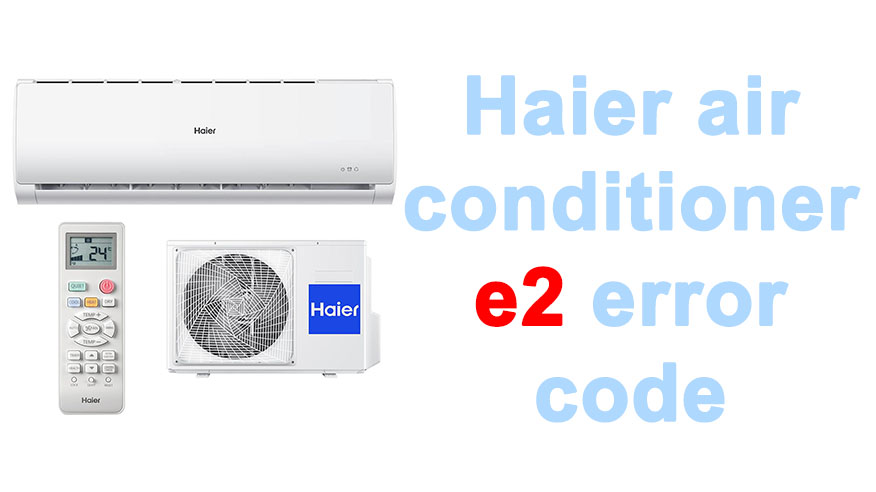Air conditioners have become an essential home appliance, with the power to turn scorching summer heat into a comfortable living environment. Among the many brands, Haier is a popular choice for consumers worldwide. While Haier air conditioners are generally reliable, they can like any electronic device, encounter issues. One such problem that may plague users is the E2 error code. This article provides a comprehensive look at this error code, including its causes, troubleshooting techniques, and possible solutions.
Demystifying the E2 Error Code
In the intricate world of air conditioning systems, error codes are a helpful tool designed to alert users of specific problems. Haier air conditioners, for instance, display the E2 error code to signify an issue with the evaporator temperature sensor.
The evaporator temperature sensor plays a vital role within the air conditioner, measuring the air temperature as it passes over the evaporator coil. The air conditioner uses this information to modulate its cooling intensity. Thus, a malfunctioning sensor is a critical issue, triggering the E2 error code.
Drilling Down into the Causes of the E2 Error Code
Various factors could trigger the E2 error code in your Haier air conditioner. These include:
- Defective Evaporator Temperature Sensor: The sensor could be faulty, which means it can’t correctly gauge the evaporator’s temperature, triggering the E2 error.
- Incorrect Sensor Placement: If the sensor’s placement is inappropriate (too close or too far from the coil), it could skew the temperature readings, causing the E2 error.
- Wiring or Connection Problems: Any issues with the wiring or the connections between the sensor and the air conditioner’s control board could disrupt the temperature reading, leading to the E2 error.
Troubleshooting the E2 Error Code: A Step-by-step Guide
Disclaimer: It is essential to switch off and unplug your Haier air conditioner before attempting to troubleshoot it to prevent electrical shock. If you aren’t comfortable handling the unit, it’s wise to seek professional help.
Here are the steps to address the E2 error:
- Examine the Sensor’s Placement: Ensure that the evaporator temperature sensor is appropriately positioned. It needs to be close enough to provide an accurate temperature reading of the coil but not so close as to risk damage.
- Inspect the Sensor: Look for visible signs of damage or wear on the sensor. If you identify any, the sensor might need replacing.
- Check the Wiring and Connections: Confirm that the connections between the sensor and the control board are secure. Also, inspect the wiring for any visible damage.
- Reset the Unit: Once you’ve conducted these checks and made any necessary adjustments, try resetting the air conditioner. Disconnect it from the power source for several minutes before plugging it back in.
If, after following these steps, the E2 error persists, it’s time to contact a professional technician. They possess the necessary expertise and tools to diagnose and rectify the issue without causing further damage to your unit.
The Role of Regular Maintenance in Avoiding the E2 Error
Regular maintenance of your Haier air conditioner can significantly reduce the chances of encountering the E2 error. Here are a few tips:
- Regular Cleaning: Keep the air filters and evaporator coils clean to ensure optimal performance. Dust and debris can affect the sensor’s readings.
- Professional Check-ups: Have a professional technician inspect the unit at least once a year to detect potential issues early.
- Prompt Repairs: If you encounter the E2 error or any other problems, address them promptly to prevent further damage.
Concluding Thoughts
While the E2 error code on a Haier air conditioner can be disconcerting, knowing what it signifies and how to troubleshoot it can help ensure that your home remains cool and comfortable. Nevertheless, always remember that if in doubt, it’s safer to contact a professional. They can diagnose and address any issues efficiently, minimizing potential damage to your unit and maintaining its longevity.
